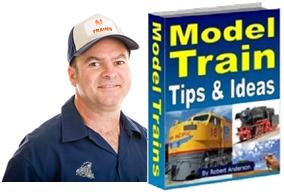
|

There is often confusion between the terms
N SCALE and N GAUGE layouts. The two terms are frequently used to refer to the
same thing. N gauge layouts as they are known in the UK are called N scale
layouts in the USA. So, if you see either of those terms used, then they are
probably talking about the same thing.
N GAUGE actually refers to the
measurement between the rails on a real or model train track. The letter “N” is
short for “NINE”, which is the distance between the rails.
N
SCALE refers to the sizing or ratio of the model when compared to a life-sized
real object. Anything in the N-scale world will be 1/160th (1:160) the size of
the real object. So, a locomotive or freight car would be proportioned at 1:160
to the prototype (real train) size. In the UK, it is fractionally different at
1/148 (1:148).
This makes N scale trains roughly 1/2 the size of HO or OO
trains. The big advantage therefore; is you can get a lot more track, scenery
(bridges, mountains, tunnels, roads etc), and structures into the same space as
you would for an HO or OO railroad. However, being smaller, N gauge
layouts take up less space
so are ideal for those hobbyists who like running long trains across layouts
with sweeping curves and wonderful open-space scenery.
Fortunately all N scale has a
gauge separation of “nine” millimeters between the rails, so that's why the terms
are somewhat interchangable.
Track and accessories are made
by several companies including: Atlas, Micro Trains, Kato, Peco, Roco, Athearn,
Bachmann, Con Cor, Marklin Trains, and Hornby. You can buy a selection of steam
engines and diesel locomotives along with freight and passenger cars, tank cars,
flatcars, grain hoppers, boxcars, cabooses, and reefers. N scale model railways can
be set up for DC or DCC operation.
|

